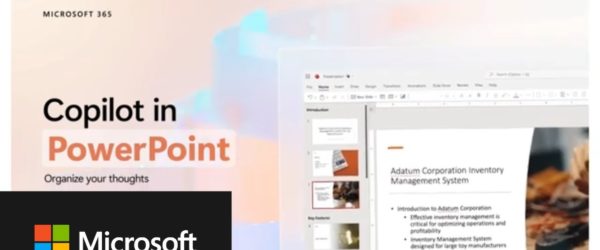
So you’ve decided to get a CRM software. Congrats! Determining when it’s the right time to get a CRM can be a momentous decision in itself.
You’ve cleared one major milestone, but then you’re faced with a second, even bigger hurdle — choosing which system in particular to adopt. How can a first-time buyer sort through the bells and whistles to parse out what features are truly necessary?
If you’re a CRM newbie attempting to navigate the sometimes confusing CRM landscape, don’t go it alone. This guide can give you perspective to separate the essential from the extraneous.
CRM Features
Before all else, a CRM system should be useful to its end users: sales reps, managers, and leaders. Choosing a CRM system with the following eight features will both enable and empower a sales team.
1. Contact Management
A choosing a CRM system without contact management capabilities wouldn’t really serve much of a purpose. All CRM systems allow sales reps to create contact records and store prospect and customer information. However, the best CRM systems reduce and streamline contact data entry as much as possible. Judge this feature with ease of use in mind.
2. Deal Stages
Most CRM systems can be customized to operate on a specific sales process. Whether your company has three deal stages or 15, you should be able to program these levels into the software and attach associated values.
It should also be easy to move a deal along the sales process, from one stage to the next. In the HubSpot CRM, advancing a deal is as simple as dragging and dropping:

3. Daily Dashboard
Reps need to be able to see certain data on a daily basis, such as their progress to date against quota, how many deals they have in their pipelines at which stages, and what tasks they need to complete. Similarly, managers and leaders need to be able to view these categories for the aggregated sales team. Evaluate this function based on visual appeal and simplicity.
4. Task Management
A rep who has to toggle back and forth between several different systems to view and complete their daily tasks is not a happy rep. CRM systems that include task management capabilities streamline salespeople’s day-to-day workflow, and help them keep on top of their follow up.
5. Content Repository
Salespeople spend a lot of time hunting for sales enablement content. If that doesn’t strike some fear into your heart, I don’t know what would. To cut back on wasted time searching for content, look for a CRM system with an embedded content repository. Not only can sales reps save the collateral they send to prospects most frequently in an easy-to-locate place, they can also file away customizable email templates so they’re not reinventing the wheel with each new contact.
6. Automated Data Capture
One of the primary reasons companies decide to adopt a CRM is to keep better track of customer and prospect touches. But beware: Many CRM applications require that sales reps copy and paste their emails into the system, or upload call recordings. And these extra steps can become maddening for salespeople making 50 or 100 calls every single day.
To ease this pain, HubSpot CRM automatically logs calls made and emails sent from the system, and posts them in a timeline-like view on a contact’s record page:

7. Reporting
A CRM system is only as good as the insights it provides. Be sure that your CRM provides reporting features that make it easy to export and distribute the trends the system reveals.
8. Mobile
Mobile capabilities are especially critical if you have a field sales team. Tying reps to a CRM system that can only be accessed via laptop is bound to annoy them if they’re constantly traveling. The majority of CRM systems today allow salespeople to log on to the application from mobile devices such as tablets and smartphones — make sure the ones you’re considering do as well.
9. Integration with Marketing Automation
If your company uses marketing automation software, make sure the CRM you choose can be tightly integrated with it. After all, the underlying concept of “customer relationship management” is to provide a complete lifecycle view into each prospect and client. A gap between marketing automation and CRM can lead to lost information and opportunities.
10. Personalized Sequences
Send targeted, timely email templates to your prospects exactly when they need to hear from you. More importantly, make sure your CRM will unenroll prospects from the sequence when they reply or book a meeting so you’re not sending canned email to contacts that have already responded — never a good look.
Your CRM should also offer follow-up reminders that automate communication with your leads, so your next big deal doesn’t fall through the cracks.
11. Canned Snippets
These short, reusable blocks of text allow you to create reusable messages via email and chat. Use them on contacts, companies, and deal records and save valuable time in the early prospecting stage with canned answers to commonly asked questions or prompts such as, “Are you interested in learning more about our pricing?” or “Would you like to schedule a demo?”
12. Email Integration
Connecting your email inbox to your CRM is crucial to streamline your outreach process and get the most from your system. Make sure your CRM integrates with your preferred email provider, such as Gmail or Outlook.
From there, your CRM should log email addresses, names, and email messages to your contact records — making it easy to keep track of who, when, and what you’ve emailed — without ever leaving your inbox.
13. Custom Support Form Fields
Want to build custom forms that connect to your contacts database? Your CRM should be able to do that. Make sure yours has user-friendly form creation capabilities like a drag-and-drop functionality.
Everyone who fills out your form should be automatically routed to your CRM making it easy for you to set up reminders to follow up with a personalized email sequence or phone call. And your CRM should allow you to embed these forms on your website in seconds — without needing a degree in computer engineering.
14. Meeting Scheduling
Salespeople set up a lot of meetings. So, shouldn’t your CRM handle that for you too? Make sure they have an app or integration for that, with a meetings tool that syncs to your Google or Office 365 calendar, shares your availability with prospects, and updates in real time.
Bonus points if that meeting tool can be embedded on your site.
Hopefully this checklist can help you buy not just your first CRM system, but the one that’s ultimately the best for your company.
BRAMS Partnership with the leader

Brams is a software integration expert, therefore perfectly suited for your Hubspot successful deployment. With more than 2 decades experience in the softeware implementation and integration field, in-depth knowledge of customer data processes and certified experts, we help you get the best of customer data with Hubspot and give more sense to your CRM.
Get In Touch With An Expert:
Source: https://blog.hubspot.com/sales/the-ultimate-first-time-crm-buyers-guide





